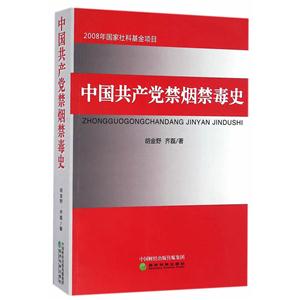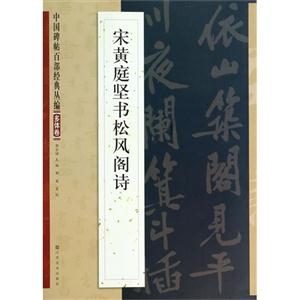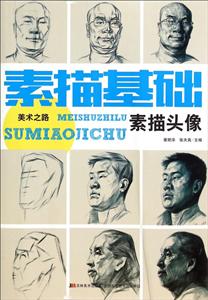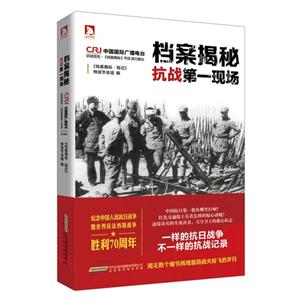西藏历史

|
西藏历史作者:陈庆英撰稿 开 本:23cm 书号ISBN:9787508536040 定价:118.0 出版时间:2017-03-01 出版社:五洲传播出版社 |
西藏历史 本书特色
本套丛书从人文视角对西藏的历史、宗教、文学、艺术、民俗进行精当展示,独到解读、描绘西藏风土人情和文化风貌,向国内外读者展示西藏魅力。各分册在内容上较多吸收了相关领域*研究成果,注重讲故事,雅俗共赏。 本书由著名藏学权威专家、中国藏学研究中心历史所原所长陈庆英撰稿。全书清晰梳理了西藏历史发展脉络,特别是以历史唯物主义的视角和方法,将西藏历史各时期重大事件的背景、过程及影响,与西藏作为地方同中央的归属关系紧密联系起来,用无可辩驳的史实证明西藏是中国固有领土和不可分割的组成部分。 This book, written by famous Tibetologist Chen Qingying, clearly outlines the historical development of Tibet. It elaborates on background, process and impact of major events from the angle of historical materialism, but also closely associates them with the relationship between the local government of Tibet and the central government. It proves with undeniable facts that Tibet is an inseparable part of China.
西藏历史 内容简介
《西藏历史》全面介绍了西藏地区由古至今的发展历史,全书分为十一章:吐蕃王朝建立前的西藏、吐蕃王朝时期的西藏、地方政教势力割据时期的西藏、元代西藏、明代西藏、清朝前期的西藏、清朝后期的西藏、西藏人民反抗英国侵略的斗争、民国时期的西藏、西藏的和平解放、西藏自治区的建立。本书以动态、发展的观点,系统梳理西藏历史社会曲折、复杂的演进变迁,很好地体现了爱国主义、民族团结、反对分裂的时代主题。书中精当利用历史文献、典籍、档案资料等,真实展示了西藏历史发展的许多重大事件,着重阐明了西藏历史的一些关键问题及其依据:西藏自古以来是中国领土一部分;如何看待历史上历代中央王朝与西藏地方的关系;客观评价历代中央政府治藏政策的意义,等等。作为附录,书中特别增加了“中央人民政府和西藏地方政府关于和平解放西藏办法的协议”,用历史进程中的关键去还所谓“西藏问题”的本真面目,颇见匠心。全书以史实证明西藏社会所经历的从落后到进步,从封闭到开放,从政教合一到政教分离,从封建统治到民族自治,从传统社会到现代化的历史性转折,澄清了所谓“西藏问题”的由来和实质,批驳了各种宣扬“西藏是一个国家”的谬论,揭露以达赖为首的“藏独”分子以暴力方式破坏我国藏族地区的稳定、和谐、发展的局面的分裂本质。本书纲目线索清晰,内容充实扼要,吸收了西藏历史研究的*实证成果,引证论述严谨客观,体现了作者的批判性思考。史论结合,言之有据,通俗易懂,又不失学术水准,体现了创新与探索。全书图文并茂,制作精良,是一本了解西藏的上乘读物,令人耳目一新。A History of Tibet introduces the development of the region ever since ancient times. It is composed of 11 chapters, including Tibet before Tubo Kingdom, Tubo Kingdom, Era of Fragmentation, Tibet in Yuan Dynasty, Tibet in Ming Dynasty, Tibet in Early Qing Dynasty, Tibet in Late Qing Dynasty, Resistance against British Aggression, Tibet in the Republic of China, Peaceful Liberation and Establishment of Tibet Autonomous Region.The book introduces the winding and complicated progress of Tibetan society with dynamic and development approaches, well reflecting the themes of patriotism, national unity and anti-secession. It vividly presents major events with historical documents, ancient records and archives. Especially, it gives stress on identifying some key facts, such as Tibet’s status of being a part of Chinese territory since ancient times, the relationship between the local government of Tibet and the central government, and the objective assessment of the central government’s Tibet policies. The Agreement of the Central People’s Government and the Local Government of Tibet on Measures for the Peaceful Liberation of Tibet is also attached in the book for reference. The book shows Tibet’s advance to prosperity and opening-up as well as its separation of religion and politics. It also witnesses the region’s shift to regional autonomy from feudal serfdom as well as the march to modernization from traditional society. By revealing the essence of “Tibet issue”, it refutes the viewpoint that “Tibet is an independent nation”. The book also discloses that separatists led by the 14th Dalai Lama use violent means to undermine the stability, social harmony and development of Tibetan-inhabited regions. A History of Tibet has a clear writing structure and concise contents. It cites the latest empirical research results of others and includes the author’s critical thinking as well. Historical facts and evidential discussions are well combined. It, in spite of its high academic standard, is easy to understand. Overall, it is one of the best books for readers to understand Tibet.《西藏历史》全面介绍了西藏地区由古至今的发展历史,全书分为十一章:吐蕃王朝建立前的西藏、吐蕃王朝时期的西藏、地方政教势力割据时期的西藏、元代西藏、明代西藏、清朝前期的西藏、清朝后期的西藏、西藏人民反抗英国侵略的斗争、民国时期的西藏、西藏的和平解放、西藏自治区的建立。本书以动态、发展的观点,系统梳理西藏历史社会曲折、复杂的演进变迁,很好地体现了爱国主义、民族团结、反对分裂的时代主题。书中精当利用历史文献、典籍、档案资料等,真实展示了西藏历史发展的许多重大事件,着重阐明了西藏历史的一些关键问题及其依据:西藏自古以来是中国领土一部分;如何看待历史上历代中央王朝与西藏地方的关系;客观评价历代中央政府治藏政策的意义,等等。作为附录,书中特别增加了“中央人民政府和西藏地方政府关于和平解放西藏办法的协议”,用历史进程中的关键去还所谓“西藏问题”的本真面目,颇见匠心。全书以史实证明西藏社会所经历的从落后到进步,从封闭到开放,从政教合一到政教分离,从封建统治到民族自治,从传统社会到现代化的历史性转折,澄清了所谓“西藏问题”的由来和实质,批驳了各种宣扬“西藏是一个国家”的谬论,揭露以达赖为首的“藏独”分子以暴力方式破坏我国藏族地区的稳定、和谐、发展的局面的分裂本质。本书纲目线索清晰,内容充实扼要,吸收了西藏历史研究的*实证成果,引证论述严谨客观,体现了作者的批判性思考。史论结合,言之有据,通俗易懂,又不失学术水准,体现了创新与探索。全书图文并茂,制作精良,是一本了解西藏的上乘读物,令人耳目一新。 A History of Tibet introduces the development of the region ever since ancient times. It is composed of 11 chapters, including Tibet before Tubo Kingdom, Tubo Kingdom, Era of Fragmentation, Tibet in Yuan Dynasty, Tibet in Ming Dynasty, Tibet in Early Qing Dynasty, Tibet in Late Qing Dynasty, Resistance against British Aggression, Tibet in the Republic of China, Peaceful Liberation and Establishment of Tibet Autonomous Region.The book introduces the winding and complicated progress of Tibetan society with dynamic and development approaches, well reflecting the themes of patriotism, national unity and anti-secession. It vividly presents major events with historical documents, ancient records and archives. Especially, it gives stress on identifying some key facts, such as Tibet’s status of being a part of Chinese territory since ancient times, the relationship between the local government of Tibet and the central government, and the objective assessment of the central government’s Tibet policies. The Agreement of the Central People’s Government and the Local Government of Tibet on Measures for the Peaceful Liberation of Tibet is also attached in the book for reference. The book shows Tibet’s advance to prosperity and opening-up as well as its separation of religion and politics. It also witnesses the region’s shift to regional autonomy from feudal serfdom as well as the march to modernization from traditional society. By revealing the essence of “Tibet issue”, it refutes the viewpoint that “Tibet is an independent nation”. The book also discloses that separatists led by the 14th Dalai Lama use violent means to undermine the stability, social harmony and development of Tibetan-inhabited regions. A History of Tibet has a clear writing structure and concise contents. It cites the latest empirical research results of others and includes the author’s critical thinking as well. Historical facts and evidential discussions are well combined. It, in spite of its high academic standard, is easy to understand. Overall, it is one of the best books for readers to understand Tibet.
历史 地方史志
在线阅读
- 最新内容
- 相关内容
- 网友推荐
- 图文推荐
| [高考] 2022 西安电子科技大学《软件工程》大作业答案 (2022-04-25) |
| [家长教育] 孩子为什么会和父母感情疏离? (2019-07-14) |
| [教师分享] 给远方姐姐的一封信 (2018-11-07) |
| [教师分享] 伸缩门 (2018-11-07) |
| [教师分享] 回家乡 (2018-11-07) |
| [教师分享] 是风味也是人间 (2018-11-07) |
| [教师分享] 一句格言的启示 (2018-11-07) |
| [教师分享] 无规矩不成方圆 (2018-11-07) |
| [教师分享] 第十届全国教育名家论坛有感(二) (2018-11-07) |
| [教师分享] 贪玩的小狗 (2018-11-07) |






